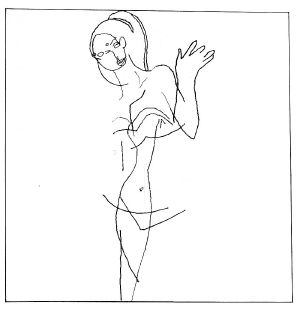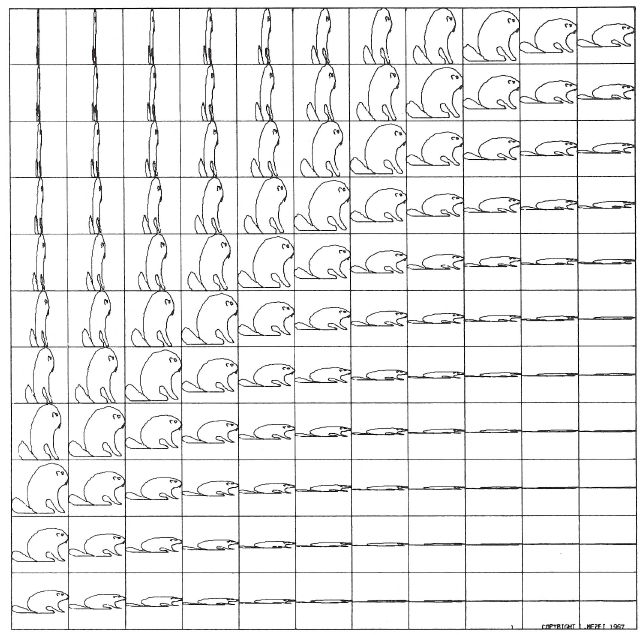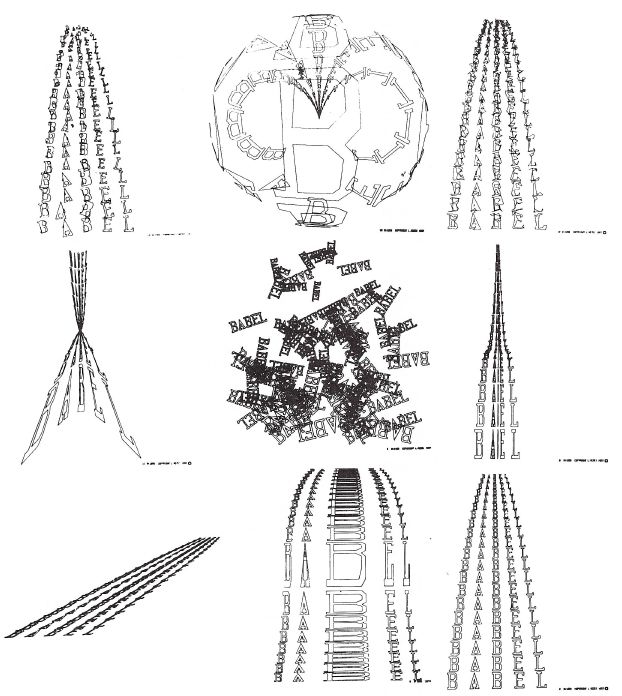published in Ruth Leavitt's book "Artist and Computer", 1976
article taken from: http://www.atariarchives.org/artist/sec7.php
Computer Art, as many new endeavors, has reached a plateau of stagnation after an exhilarating start full of promise. The computer specialists who first played with these possibilities soon exhausted their ideas and their interest. They merely did what was easy and obvious with their hardware and their even more limited software. Since they were first the results were unique and interesting, but generally 'artless,' and not very innovative. [--> compare to G. Youngblood, p.192: "However, there is a tendency to regard any computer-generated art as highly significant— even the most simplistic line drawing, which would be meaningless if rendered by
hand."]
The first wave of artists—really only a small ripple—that came to the computer expected miracles from it without a serious effort of learning and exploring and creation on their part. The results were in a way even more disappointing, except in the cases where the artist was already doing a type of art which could be directly assisted by computer techniques, such as modular art. Some instead succeeded in prettifying the output of their technical collaborator, without any real understanding of the processes involved. The rest were confined to existing programs and repeated the technicians and each other's work [--> compare to "creative" software applications such as photoshop & co. what freedom and what constraints do they give to artists?]. Those first class artists that deigned to inquire into the possibilities were quickly discouraged by the lack of convenient control over the computer, the difficulty of communicating visually with it, and the amount of effort required to do it really well.
Today we are left with a small number of people from both sides, each of whom is aware of the long term effort needed to exploit the potential. The promise is as great as ever, but, as usual, requires more application and ingenuity and application than at first realized. The artists, and especially the art students, are willing to learn programming and some mathematics, and to learn to think in an algorithmic, process oriented manner. More importantly, in my view, they are ready to transcend the technological art so far pursued, and learn something of the underlying scientific ideas. [Applying any new technology slavishly results in imitative work, often foreshadowed by visionary artists long before the new technology. (Compare Picasso's drawings with some of our transformations, such as my BIKINI SHIFTED).] It is the new concepts and ideas, the new ways of thinking provided by the information sciences that will provide this. I am referring to our enriched understanding of system, structure, randomness and process as well as of the very process of communication and language, and the more realistic accounts of the methods of discovery in the sciences and the arts.
I have developed an Interdisciplinary course on the Concepts of the Information Sciences, in which we explore many of the concepts which come from cybernetics and computer science, communication theory and linguistics, general systems research and morphology, mathematics and operations research, etc.
The technical computer specialists, on the other hand, have to become aware of the potential contribution of the artists, develop a respect for their pattern perceiving and pattern generating abilities, for their trained sensitivity to the exploration of novelty, their ability to select what is most significant; indeed—at their best—to make concrete the future before it happens, before we can define it, formalize it and verbalize it. We may well end up in the next few years with a few individuals who have mastered both sides reasonably well. Programmer-artists and artist-programmers. Collaboration and multimedia are not impossible, only extremely hard and rarely successful. But then, so is most activity of a high ambition, high risk, innovative nature.
Of course, both should have an awareness of what has been already done, and what directions have been pointed to. My own book (Computer Art), which does just this is still making the rounds of the publishers, and the book introducing some of the information theoretic ideas applied to this field is in the German language ("Asthetik als Informationsverarbeitung," Frieder Nake, Springer-Verlag). Though Franke's book covers too large an area too superficially, it is the only book in English I can recommend ("Computer Graphics, Computer Art," H.W. Franke, Phaidon). In any case no exciting new ideas and results have appeared in the last few years; the next wave of creativity in this field is probably still a few years away.


'BEAVER SCALED'

'BABEL SHOOK'
What we ask of the artist is to use the science and technology to explore and expand our reality, and make statements of significance to today's tortured but expectant world. We have all filled pages and pages of programmatic notes, enough aims for a lifetime. Now it is time to raise the standards, to stop applauding the fact that we can do art with the aid of a computer at all, and apply as critical judgment to our results as to any other works of art. The hardware and software are becoming more flexible and less expensive. Our own Dynamic Graphics Group, for example, is developing, under the leadership of Ron Baecker, a system with both a high speed line display and a digital color video tube, with sophisticated software for interactive dynamic graphics for artistic and simulation purposes. We are now making an arrangement with the local art college for a few of us each to 'adopt' one art student to work with us, sit in on our courses and develop themselves in their own way gradually.

My own work, all done a few years ago, has tried to make a novel beginning in the exploration of controlled randomness, of various distortions and transformations. These were neither systematic enough to be scientific, nor did they try to achieve the ultimate exploitation of their medium to be really good art. They merely tried to point the way toward new possibilities. From the still graphics I shifted to animation, and some successful films were produced on our system by a number of artists working with the help of a programmer. But I was not sufficiently involved with this work, merely the producer allowing it to happen. As soon as our equipment and software are advanced enough to undertake ambitious concepts easily, I intend to combine my developing understanding of graphic simulation methods and of the new concepts of feedback, structure, system, randomness and so on to try to create a new combination of science and art.
My background was in mathematics, physics and meteorology by training, and for the last 21 years computers, learned on the job. An early interest in the possibility of computer art (first paper on the subject in 1964) led me to become an academic, and to computer graphics research, as well as many other fascinating ideas and people. There is a constant struggle within me between the symbolic mathematical, the visual artistic and the verbal literary modes of expression, with the verbal winning at the moment. I do have a fascination with the visual possibilities, especially as seen in the incredible complexity and variety in nature—combined within many organizing aspects. However, to express this is—at least for me—a difficult, time consuming and indirect process.
We need to find those things which uniquely suit these new media, which can only be expressed with their help, and thus make the effort worthwhile. I look for the fresh wind of ideas from the new wave of art students who will be literate in the information sciences, and conversant with interactive computers and the new processes which they can help visually explicate.
Toronto, Canada
July 1975




No comments:
Post a Comment